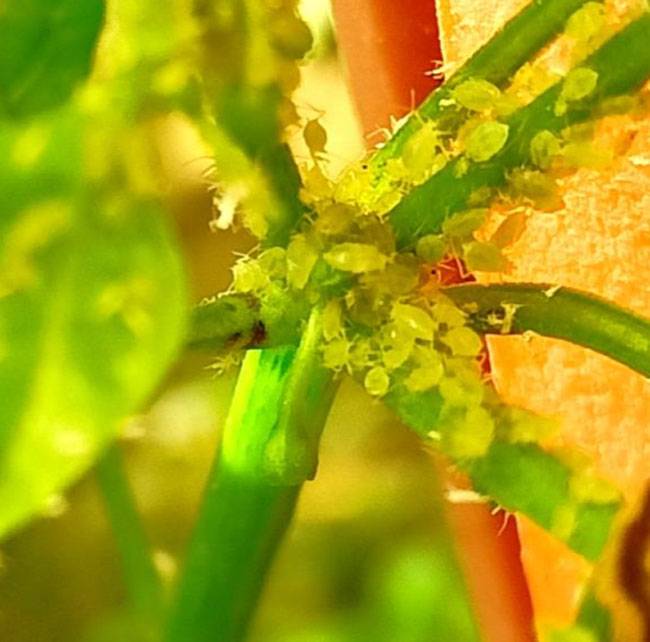Cumin
Aphids

Aphids
Myzus persicae
The green peach aphid (Myzus persicae) is a highly adaptable pest that infests a wide range of vegetables, ornamental plants, and field crops. Its ability to thrive in greenhouse environments enables it to survive inclement weather and facilitates long-distance transport via plant material. When infested plants are transplanted into fields, they not only introduce aphids but also contribute to the spread of insecticide resistance. Additionally, aphids can travel great distances through wind and storms, exacerbating their spread.
Symptoms of Infestation
Direct Damage: Nymphs and adult aphids feed on plant sap, primarily from leaf veins and younger leaves. This leads to:
Stunted plant growth.
Reduced yield.
Curling and distortion of leaves.
Virus Transmission: Aphids act as vectors for several devastating plant viruses in capsicum, including:
Cucumber Mosaic Virus (CMV): Causes mosaic patterns, mottling, yellowing, and deformed fruit.
Leaf Curl Virus: Leads to upward and downward curling of leaves with yellow spots.
Pepper Veinal Mottle Virus (PVMV): A widespread and severe virus affecting peppers.
Other viruses: Potato Virus Y (PVY), Tobacco Etch Virus (TEV), and Alfalfa Mosaic Virus (AMV).
Life Cycle and Environmental Preferences
The life cycle of Myzus persicae varies with environmental conditions, allowing it to complete over 20 generations annually in mild climates.
Life Cycle Stages:
Egg Stage:
Eggs are laid on leaves, measuring ~0.6 mm long and elliptical.
Initially yellow or green, eggs turn black before hatching.
Mortality during this stage can be high.
Nymph Stage:
Nymphs resemble adults and pass through four instars with durations of 2.0, 2.1, 2.3, and 2.0 days.
Develop into viviparous adults within 10–12 days under optimal conditions.
Adult Stage:
Females begin reproducing 6–17 days after birth, with an average age of 10.8 days at first reproduction.
Reproduction lasts an average of 14.8 days.
Environmental Conditions:
Temperature:
Optimal for population growth: 26.7°C.
Lower and upper developmental thresholds: 6.5°C and 37.3°C, respectively.
Can survive 1 hour daily above the lethal point of 38.5°C.
Fluctuating Conditions:
Development and fecundity are enhanced under fluctuating temperatures.
Females produce 12.2 progeny weekly under optimal fluctuating conditions versus 5.9 progeny under constant conditions.
Implications for Management
The adaptability of Myzus persicae to varying environmental conditions, coupled with its role in virus transmission, underscores the need for robust pest management strategies. Integrated pest management (IPM) approaches, including biological controls, resistant plant varieties, and careful monitoring, are essential for minimizing the impact of green peach aphids on crops.
(Image Source: ICAR,NewDelhi)